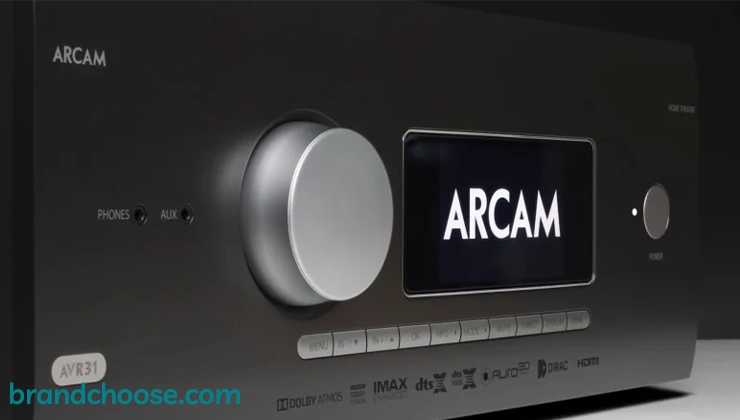
-
Immersive audio technologies like 360 Reality Audio and Dolby Atmos.
-
Seamless integration with PlayStation and Bravia TVs.
-
Advanced gaming features including VRR, ALLM, and eARC.
-
Sleek, modern design with premium finishes.
-
Affordable entry-level options starting at just $200.
-
Superior smart ecosystem compatibility with Google Assistant, Alexa, and more.
Sony AV Receivers
In the realm of home entertainment, the heart of a truly immersive experience lies within the audio-visual (AV) receiver. Among the myriad of options available, Sony AV receivers stand out as beacons of innovation, performance, and reliability. In this article, we delve into the realm of Sony AV receivers, uncovering what makes them exceptional, their unique features, advantages, disadvantages, and why they deserve a place in your home theater setup.
Sony AV receivers serve as the nerve center of your home entertainment system, designed to decode, amplify, and distribute audio and video signals with precision and clarity. Infused with cutting-edge technology and decades of audio expertise, Sony receivers deliver an unparalleled audio-visual experience that captivates the senses and transports you into the heart of the action.
Connectivity Options
Sony's AV receivers are renowned for their extensive connectivity options, incorporating the latest technologies to ensure seamless integration with a variety of devices. The brand's models typically include multiple HDMI inputs and outputs, USB ports, and digital audio inputs. For wireless connectivity, many Sony AV receivers are equipped with Bluetooth, Wi-Fi, and AirPlay capabilities, allowing for easy streaming from smartphones, tablets, and computers. Some models also support multi-room listening through Sony's Music Center app, providing a convenient way to control and distribute audio throughout the home. However, while Sony's AV receivers offer robust connectivity, they do not always support the latest HDMI standards, such as eARC or HDMI 2.1, which could be a drawback for those looking to future-proof their home theater setup. In comparison, brands like Denon and Marantz often include these features in their AV receivers. Nevertheless, Sony's connectivity options are generally reliable and versatile, making them a strong choice for those seeking to connect a wide range of devices.
Arcam AV Receivers
In the realm of home entertainment, the heart of a truly immersive experience lies within the audio-visual (AV) receiver. Among the myriad of options available, Arcam AV receivers stand out as beacons of innovation, performance, and reliability. In this article, we delve into the realm of Arcam AV receivers, uncovering what makes them exceptional, their unique features, advantages, disadvantages, and why they deserve a place in your home theater setup.

Connectivity Options
Arcam, a renowned brand in the AV receivers category, offers a variety of connectivity options in their models that cater to the needs of modern users. One of the key features is the inclusion of HDMI 2.1 ports, which support 8K/60Hz and 4K/120Hz video pass-through, ensuring compatibility with the latest high-definition video formats. Additionally, Arcam AV receivers also provide eARC (Enhanced Audio Return Channel) support, which allows for the transmission of Dolby Atmos and DTS:X from TV apps with a single HDMI connection. In comparison to other brands, Arcam stands out with its inclusion of Dirac Live room correction technology, which can be connected to a computer for a higher level of customization. However, one potential downside is that some users may find the lack of built-in Wi-Fi a drawback, as many competitive models offer this feature. Nevertheless, Arcam compensates with Ethernet connectivity and Bluetooth, ensuring users can still stream music from devices or connect to home networks. Despite these minor cons, when it comes to connectivity options, Arcam AV receivers are on par, if not superior, to many other brands in the market.
















